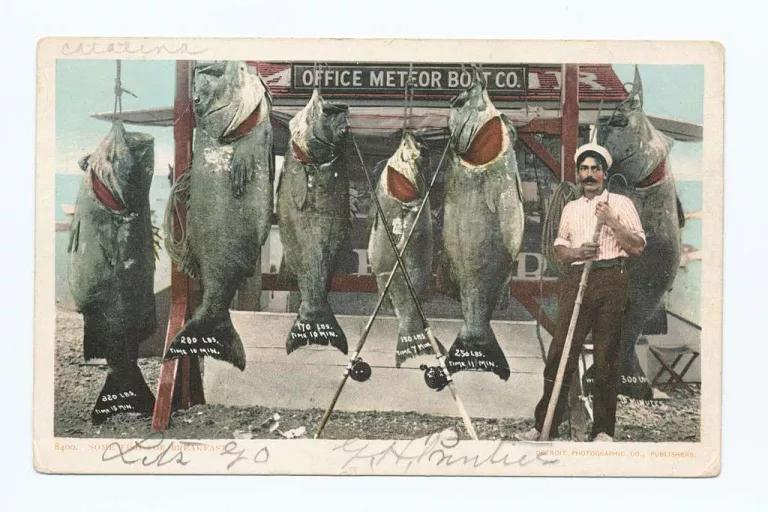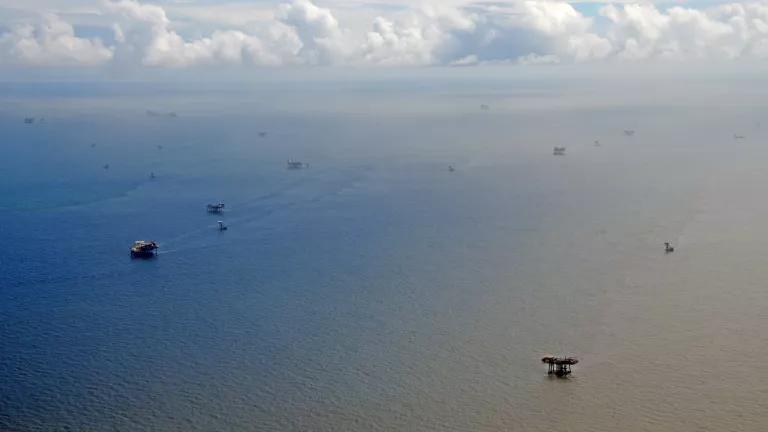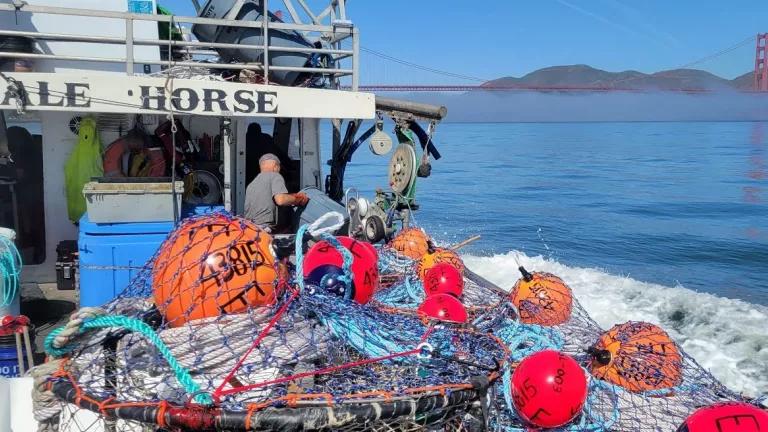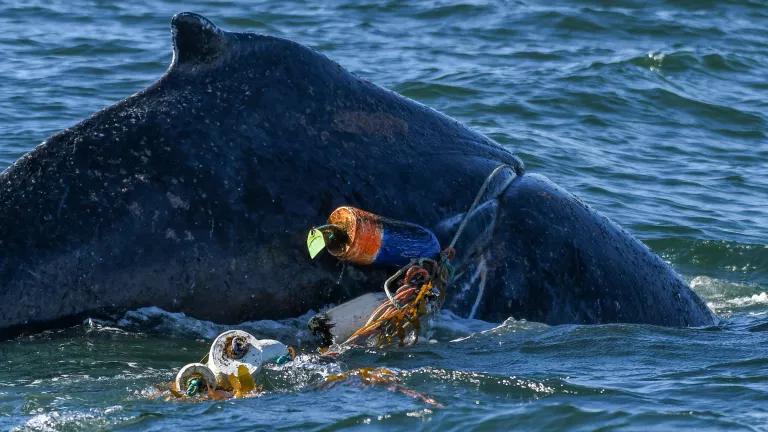A Healthy Ocean Future Depends on Protected Areas
Trophy fish can be an ecosystem's savior.

A catch of now critically endangered giant black sea bass from Catalina Island, California in 1904.
Detroit Photographic Company
Anyone familiar with sportfishing has heard the stories. The “golden days of fishing,” when fish were plentiful, the ocean seemed infallible, and “the one that got away” probably sized up to your imagination. In some romantic, hopeful way, that’s what still draws many of us out there—the chance to catch one for the record books. But the reality is, the trophy fish of our parents’ and grandparents’ generations are fewer and fewer.
Our ocean history is filled with stories of how it was—whales across the horizon, giant schools of sardines, abalone throughout our kelp forests, expansive sea grass beds. The list goes on. But there are also stories of what our future could be. We have seen that meaningful policy, informed by science, and respect for our natural world has also brought species like the grey whale back from the brink of extinction.
Today, the California Fish and Game Commission begins to consider the future of our state Marine Protected Area (MPA) network. It’s been a decade since these ocean parks were established, and this is the opportunity to safeguard California’s ocean for the decades ahead. Governor Newsom has already heeded the call of scientists and set us on a path to protect at least 30 percent of our land and ocean by 2030. Strengthening and expanding our state’s MPAs is the most effective tool we have to achieve that goal while bringing back places that look like what the ocean once was, and what it should be.
Knowing the value of marine life along our beloved coastline and armed with the best available science, the state of California took a bold step over a decade ago to protect, at varying levels, 16 percent of our waters. California set a gold standard of implementing a network of marine protected areas and investing millions to monitor them for success. Since then, development pressures have accelerated and climate change is evident in our marine environment, with the drastic loss of kelp along our coast becoming the harbinger of these impacts.
“Fully” and “highly” protected areas, which limit fishing and other extractive activities, are our best tool to help create a healthier ocean for our children and grandchildren. Exploring California’s fully protected State Marine Reserves, which limit fishing altogether, is what gives me hope for our future. The marine life is healthy, thriving and consistently home to some of the largest fish I’ve encountered. Through extensive monitoring and research over the last ten years, science confirms what I’ve seen firsthand. There are more fish within our State Marine Reserves, and they are bigger, offering our best chance for trophy fish to live beyond the tales of fishermen past. Affectionately called BOFFFs by scientists, for Big, Old, Fat, Fertile, Female fish, these long-lived and large fish are essential to building resilience among fish species throughout the ocean. They are heartier, more efficient spawners, and produce more eggs and healthier offspring. Trophy fish are an ecosystem’s savior.
While some conservation-minded anglers may be thoughtful about catch and release practices, many types of commercial fishing gear are less discriminating, catching most everything in their path and often scarring the very habitat on which fish and other species rely. Limiting the take of fish through catch limits and size limits set by fisheries management is important, but it alone cannot ensure the future of our ocean. We must also protect the habitats these fish rely on, allow space for fish to become BOFFFs, and care enough to protect all the other amazing marine life impacted by a changing climate and human activities in the ocean. Even as an avid fisherwoman, knowing a trophy fish’s progeny will eventually swim our waters in abundance once again is a bigger reward than landing one myself.
As an angler and an ocean advocate, I am not content with only hearing stories of the good ‘ol days and doing nothing to set us on a path to a vibrant, healthy ocean. We have the knowledge, the science, and the policy tools to make it happen. As an angler, more than 70 percent of California’s ocean will still be open to the pursuit of a trophy fish. As an advocate for the ocean, I know meaningfully protecting more of our coast enriches the ocean and will continue to reward us all well into the future.



